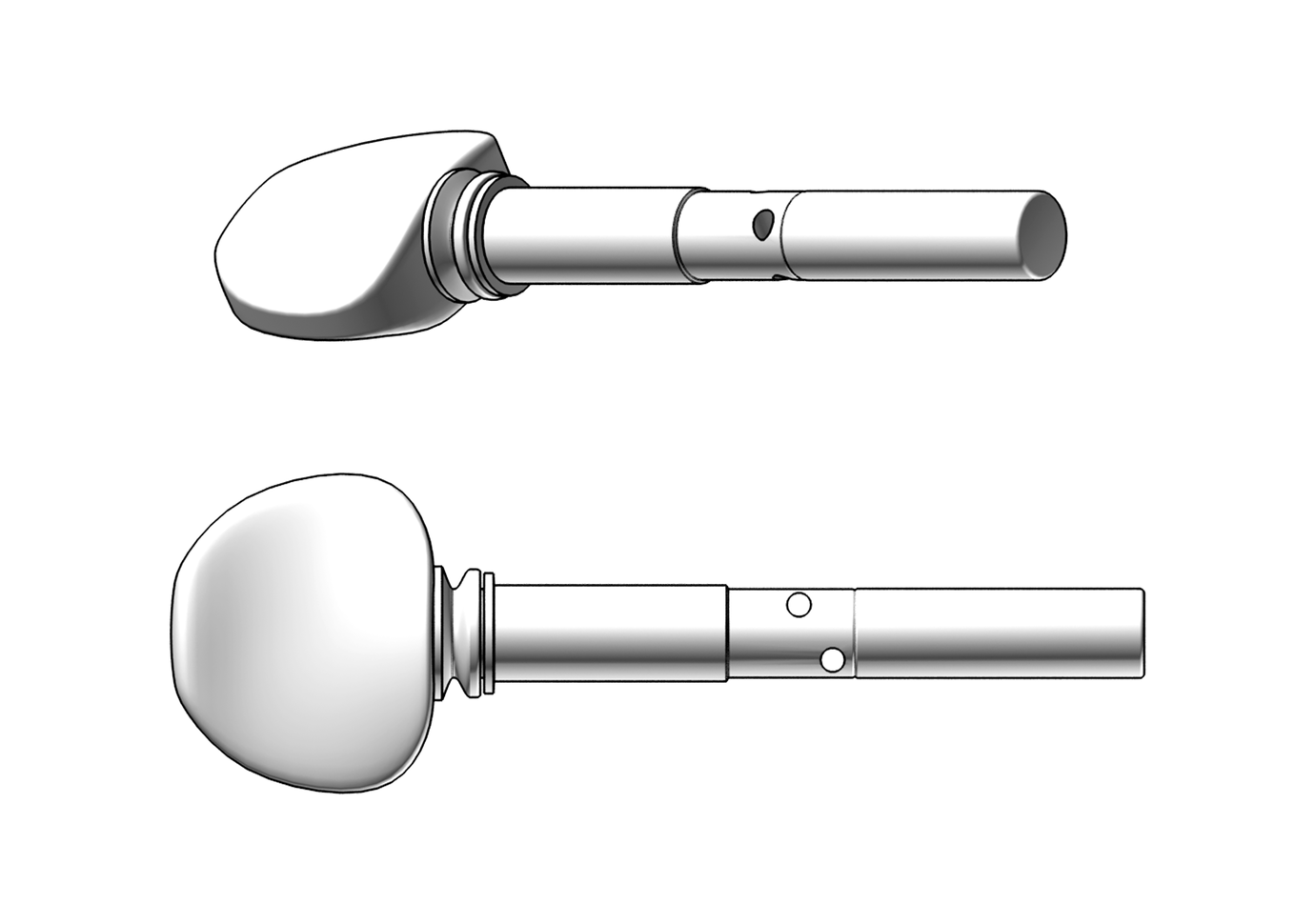Have you spent years mastering the art of string playing but still know little about the ideal way to handle your tools? Are you curious to learn more about the possibilities a high-performance string offers and do you want to optimize your performance in a few simple steps? Stringtelligence offers you an exclusive insight into the science of strings. Find widely unknown tips and tricks of the trade to perfect your sound and elevate your playing to an unexpected level! More than 20,000 words and 19 video tutorials in over 90 chapters: This is string know-how at its best!
Why can a string core crack?
A string is designed so that it will not crack when used correctly. Nevertheless, it may be due to the following reasons:
- Overload
- Corrosion and sweaty hands
- The string cracks at the fine tuner hook
- The diameter of the tuning peg
- The nut of bridge or saddle
- The string core dries out
- A production error
1. Overload:
The string was too highly pitched, meaning it became overloaded. It’s not forced to crack straight away, but the life span of the string is always reduced by an overloading and can lead to the actual cracking of the string. See: How can I improve the life span of my strings?
2. Corrosion and sweaty hands:
The core has become corrosively damaged by sweat, which can cause the core to fail or even crack. See: Which strings should I choose if I get sweaty hands?
3. The string cracks at the fine tuner hook:
The string’s loop is attached to the fine tuner hook. The constant vibration and movement of the string means it gradually saws its way into the fine tuner hook. The fine tuner hook becomes a small, virtually invisible groove (it is just a few micrometers, i.e. a thousandth of a millimeter), which still manages to be sharp at the edges. Imagine this sharp edge like a saw: the incision of a saw is always sharp-edged. The string continues to vibrate when playing and can now be damaged by the sharp edge that has developed on the fine tuner hook. The solution? Regular maintenance of the fine tuner hook by a luthier. With a small file, the luthier can round off the groove and sharp edges. A groove only occurs after many weeks or even months. For this reason, we recommend visiting a luthier every 6 months. If you do not get the groove removed, a further problem can occur when fitting a new E-string. Specifically, if the new E-string has a larger diameter than the string responsible for the first groove. The thicker E-string can get wedged in the groove as a result and chafe.
4. The diameter of the tuning peg is too small:
This leads to an excessively high strain on the outer fibers. As a result, the string winding breaks up and the string can crack. Why? Imagine a banana. A banana has a limited degree of flexibility. If this is exceeded, the peel breaks open.

A string is made up of various materials, each with its own specific degree of flexibility, a defined elastic range. If the string is coiled too tightly, i.e. really bent, the winding breaks up. At worst, this can also cause the string to crack. Particular care is required for the fine tuning pegs. Fine tuning pegs have a smaller diameter in their center part than on the outer parts.
5. The nut of bridge or saddle:
When the friction on the bridge or saddle is too great, the string can also be damaged and crack. A string is curved at three positions: at the peg, saddle and bridge (the E-string is also curved at the fine tuner hook). After the string has been fitted, it is now tuned – this means the string is tightened with the peg. With each rotary movement of the peg, the string presses more strongly on the bridge and saddle. At the same time, the string stretches and moves towards the peg. The combination of pressure and movement causes vibrations on the bridge and saddle. To minimize the friction, a lubricant is needed. This is why you should apply graphite to the grooves on bridge and saddle. The string now slides more gently over the grooves on the bridge and saddle and is not damaged or tugged in.
6. The string core dries out:
Lots of gut strings and synthetic core strings are stretched by the absorption of moisture (e.g. sweat). Due to this stretching, the musician must adjust the strings further while playing (tighten). If the musician now leaves the instrument with its tightened strings for a few days after playing, the core dries out again and the string tries to contract again as a result. However, this is not possible as the string is fixed to the instrument. The tension increases and the string can crack. The Solution: you need to tune the instrument daily.
7. The string has a production error:
Please contact Thomastik-Infeld and return the string to us for quality control and analyzation! Many thanks in advance!
BACK

 ESPAÑOL
ESPAÑOL